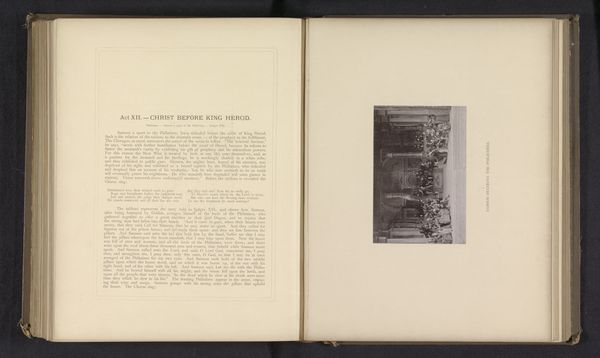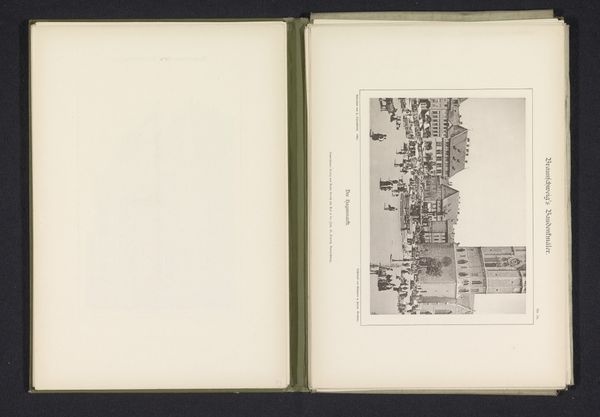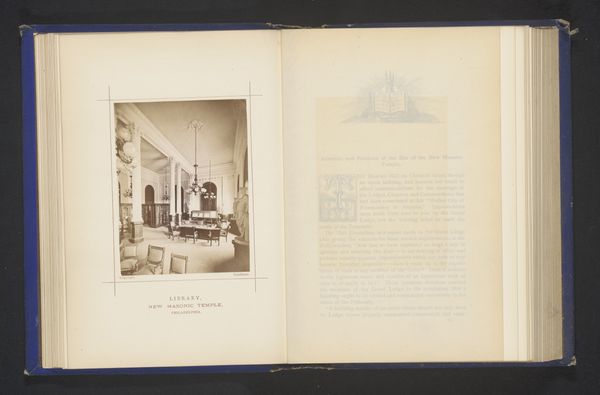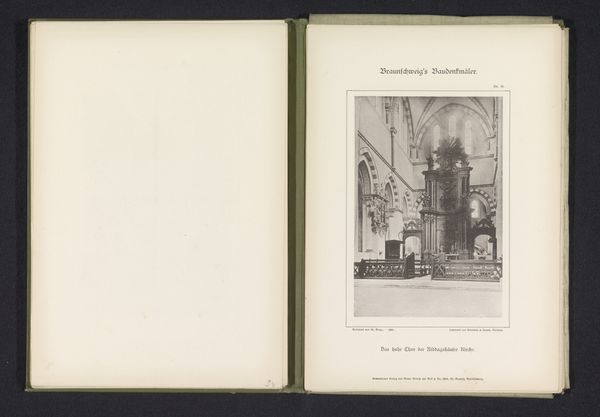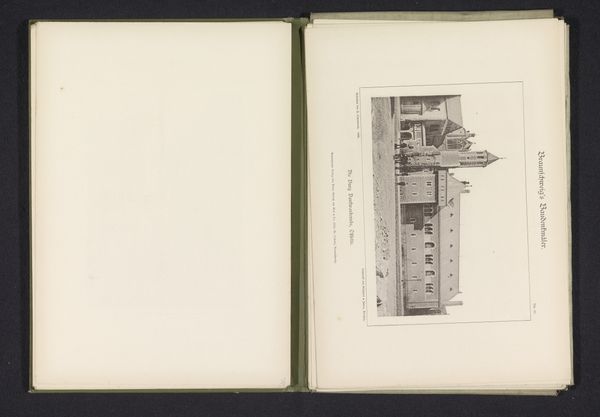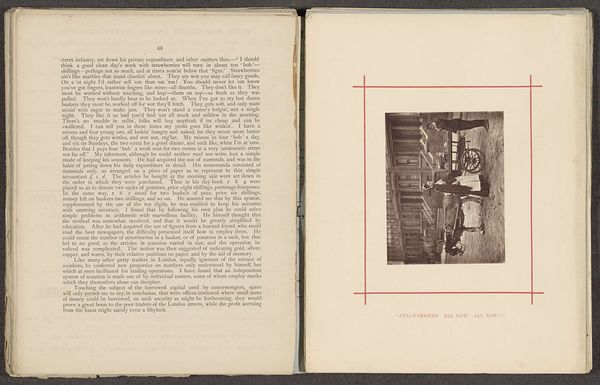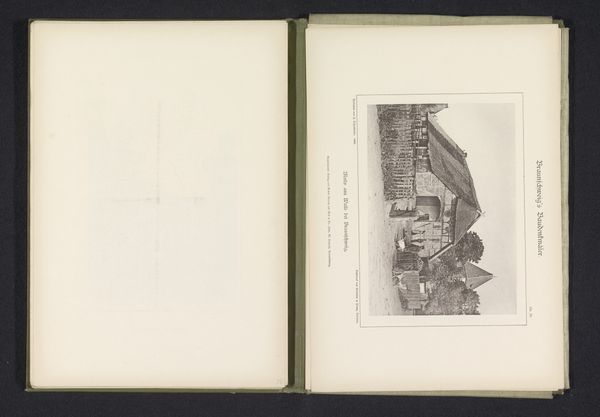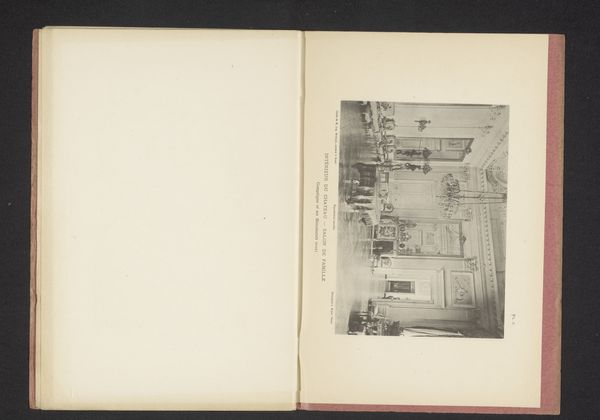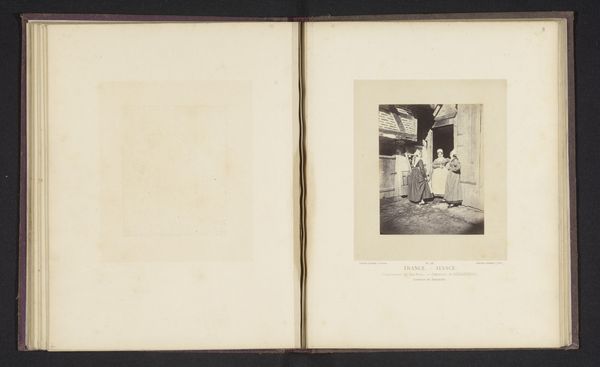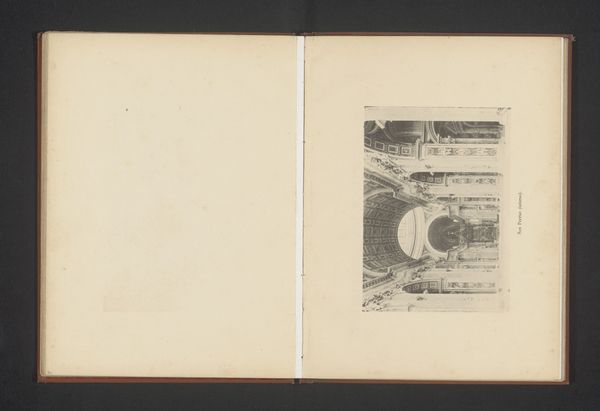
print, photography
# print
#
photography
#
cityscape
#
realism
#
building
Dimensions: height 151 mm, width 99 mm
Copyright: Rijks Museum: Open Domain
Curator: Looking at this photographic print from 1892 by J. Schombardt, titled 'Erker van een gebouw aan Reichenstraße 3 te Braunschweig,' one can immediately grasp a sense of architectural detail characteristic of that era. Editor: Yes, my first impression is one of elaborate ornamentation. The dark-and-light contrasts in this image almost create a stark geometric feel, despite the soft tonal qualities. The play of shadow gives it a sense of gravitas and even slight austerity, doesn’t it? Curator: Absolutely. And, beyond the aesthetic, consider the societal function such ornamentation played. Buildings like these were expressions of civic pride, projecting prosperity and cultural identity. These highly crafted oriel windows declared the status and wealth of the city, while also enhancing the daily life of the streetscape for both building occupants and passersby. Editor: I'm struck by how the light defines the depth. The almost sculptural relief details emerge thanks to the strong shadows cast from sunlight. Curator: That light is critical. In a way, the photographer is participating in constructing that civic narrative, capturing an architectural scene for wide distribution, and cementing these structures in the collective consciousness. Think of the debates raging at that time about what was worthy of memorialization in burgeoning public museums and civic records. This type of photography aimed at preservation but also influenced perceptions. Editor: And it's not just preservation of architectural detail, but preservation of social history in a sense. Photography's ability to document such detail provides so much information about the culture of its time. Curator: Exactly! The choice of subject, the angle, and the way in which this architectural feature has been contextualized offers so much insight. Even the fact that it's printed, distributed, and preserved tells us something about its perceived importance at the time. Editor: On closer examination, that contrast-focused photography adds a very specific aesthetic layer here, intensifying the geometry but almost detaching the building from its earthly connection, in an attempt at formalizing and idealizing reality. I will certainly revisit the photo with fresh eyes. Thank you for drawing attention to that important fact. Curator: My pleasure. These photographic images offer far more than architectural details and style analysis, capturing social context and civic ambitions, reflecting and influencing historical narratives that shaped our current landscape.
Comments
No comments
Be the first to comment and join the conversation on the ultimate creative platform.
